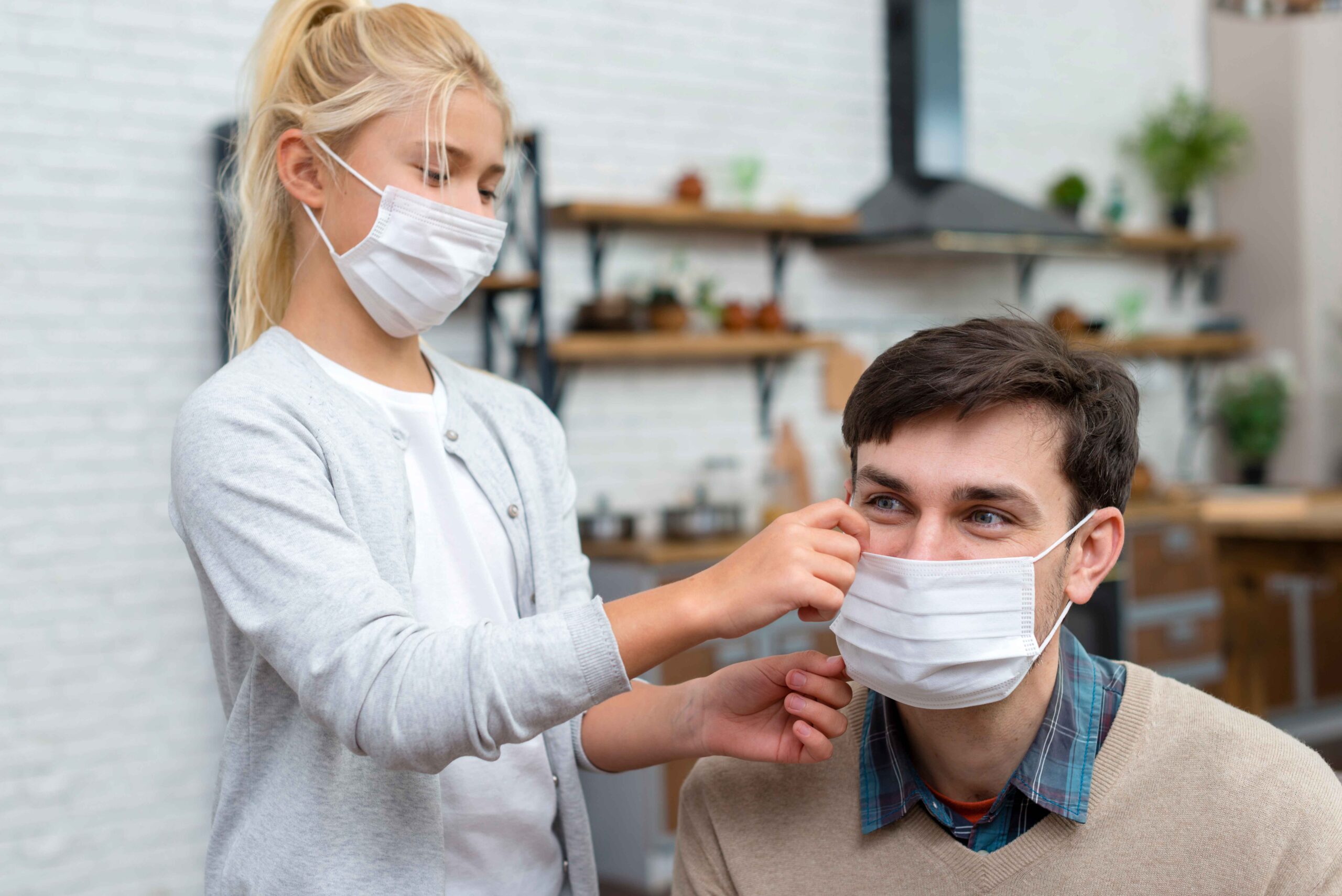Introduction:
Have you ever seen a child who lives only through the mouth, snores loudly every night, or keeps bringing up ear conditions? These may not just be normal youth problems. One of the most ignored situations behind such symptoms is adenoidid. It happens when the adenoids—small glands located after the nose—become swollen or infected. While adenoids help fight germs in early youth, they can also create problems if they stay dilated for too long.
This guide desires to describe everything about adenoidid in easy, easy-to-follow language. We will discuss its symptoms, causes, diagnosis, medicines, and even natural care choices. Whether you are a parent, caregiver, or simply looking for details, this guide will give you all the important points you need to know in 2025.
What is Adenoidid?
Adenoidid is the swelling or condition of the adenoids, which are part of the lymphatic system. These glands filter bacteria & viruses and supply immunity during early childhood. However, continuous exposure to infections can make them inflamed, leading to problems in breathing, recurring sore throats, and sleep issues.
Though adenoidid is most typical in children aged 2 to 7, it can occasionally involve older kids and even adults. The condition is often mistaken for tonsillitis, but adenoids and tonsils are extra. Adenoids are located higher up, after the nasal hole, and are not visible via the mouth without medical tools.

Common Symptoms of Adenoidid
Signs of adenoidid vary from child to child, but there are some specific warning signs that parents should not forget:
- Persistent nasal congestion or stuffy nose
- Loud snoring or restless sleep
- Breathing through the mouth instead of the nose
- Frequent ear infections or fluid buildup in the ears
- Bad breath and a nasal-sounding voice
- Daytime tiredness due to poor sleep
If left untreated, adenoidid hypertrophy can cause long-term difficulties such as speech delays, understanding problems, and even sleep apnea. Children with broadened adenoids may also create facial changes, often called “adenoid face,” due to continuous mouth breathing.

Causes and Risk Factors of Adenoidid
Adenoidid is primarily caused by bacterial or viral conditions. When germs are trapped in the adenoids, they become distended as the body tries to fight off infection. Allergies can also aggravate the condition, as allergens like pollen, smoke, or dust rub the adenoids.
Main risk factors include:
- Young age (2–7 years old are most at risk)
- Family history of throat or ear infections
- Frequent colds and respiratory infections
- Weak immune system
- Exposure to second-hand smoke or polluted air
Understanding these hazard elements helps parents take preventive steps early, such as improving hygiene or decreasing allergen exposure at home.
More Read About: How-to-Guide for Insoya Benefits and Uses (2025)
How Doctors Diagnose Adenoidid
Doctors usually analyze adenoidid using a variety of medical history, biological exams, and imaging. A nasal endoscopy—a small tube with a light & camera—is often used to see the scope of the adenoids. In some cases, X-rays may also be accomplished.
If the child has recurring ear issues, a hearing test may be advised. Doctors also ask about rest habits since enlarged adenoids can lead to sleep apnea. Accurate diagnosis is necessary because symptoms of adenoidid can occasionally imitate sinusitis or tonsillitis.

Medical Treatments for Adenoidid
Medicine depends on the severity of the state. In mild cases, doctors may advise medicines such as antibiotics, antihistamines, or nasal sprays to loosen swelling. If adenoidid occurs due to allergies, treating the allergy also helps.
In more severe or regular cases, doctors may advise adenoidectomy, which is the surgical reduction of the adenoids. This surgery is safe and typically conducted in children. Recovery usually takes one week, and children often show rapid progress in breathing, sleeping, and overall health.
Important treatment points:
- Mild cases: Antibiotics, antihistamines, or nasal sprays
- Moderate cases: Close monitoring and supportive care
- Severe cases: Adenoidectomy surgery
Home Care and Natural Remedies
Not all issues of adenoidid need surgery. Parents can help control mild signs at home with lifestyle care and true-to-life treatments.
Helpful home care tips:
- Use a humidifier to keep air moist and reduce irritation
- Give warm fluids like soups and teas to soothe the throat
- Encourage frequent handwashing to reduce infections
- Maintain a smoke-free and dust-free environment at home
- Provide balanced meals rich in vitamins and minerals
These steps may not cure adenoidid completely but can ease symptoms and support medical treatment.

Comparing Medical and Home Care Approaches
| Aspect | Medical Treatment | Home Care & Remedies |
| Goal | Treat infection, reduce swelling, prevent relapse | Ease symptoms, improve comfort |
| Involves | Antibiotics, nasal sprays, or surgery | Warm fluids, humidifier, hygiene practices |
| Best for | Moderate to severe or recurring cases | Mild cases or supportive care |
| Effectiveness | Quick relief and long-term solution | Provides comfort but not a cure |
Long-Term Effects of Untreated Adenoidid
Ignoring adenoidid can lead to several difficulties. Children may experience regular ear conditions, leading to hearing loss. Sleep problems may cause fatigue, crankiness, and difficulty concentrating in school.
Possible long-term effects include:
- Development of “adenoid face” due to prolonged mouth breathing
- Speech delays and unclear pronunciation
- Poor academic performance due to sleep loss
- Increased risk of sinus infections
Parents should take these risks seriously and seek treatment early.
Prevention of Adenoidid in Children
While adenoidid cannot always be avoided, some preventive measures reduce the chances of recurrence.
Prevention tips
- Teach children proper hand hygiene
- Keep the home environment smoke-free
- Avoid sending children to school if they have colds or infections
- Strengthen immunity through healthy food, adequate sleep, and hydration
- Use air purifiers to reduce dust and allergens indoors
Prevention not only reduces the risk of adenoidid but also improves overall health and resilience against infections.

Positive vs Negative Roles of Adenoids
| Role of Adenoids | Positive Role | Negative Role (When Inflamed) |
| Germ protection | Helps fight bacteria and viruses | Traps germs, leading to infections |
| Early immune defense | Strong during early childhood | Becomes weak and problematic later |
| Growth with age | Shrinks naturally by adolescence | Stays enlarged, causing blockages |
| Health impact | Supports immunity in young children | Causes ear, nose, and sleep problems |
Key Takeaways
- Adenoidid is common in children but can be treated successfully.
- Symptoms include nasal blockage, snoring, and frequent ear infections.
- Causes range from infections to allergies and environmental factors.
- Diagnosis involves medical history, physical exams, and imaging.
- Treatment options include medicines, surgery, and home care.
- Prevention through hygiene and healthy lifestyle habits is essential.
Conclusion
Adenoidid is not just an easy condition—it can have ongoing results if ignored. But the good news is that with understanding, early diagnosis, and proper care, children can heal quickly and live more nutritious lives. Parents should pay attention to symptoms, seek medical advice when needed, and help their child with preventative care at home.
In 2025, with more suitable awareness and medical choices, working adenoidid has become more comfortable and safer than ever before. Staying informed is the best way to provide your child’s health & well-being.
FAQs About Adenoidid
Q1: Can adults also suffer from adenoidid?
Yes, though rare, grown-ups can create adenoidid, particularly if they have chronic allergies or infections.
Q2: Does every child with adenoidid need surgery?
No, surgery is suggested only in severe or frequent cases that do not improve with treatment.
Q3: Can adenoidid cause hearing problems?
Yes, broadened adenoids can block the ear canal, leading to fluid buildup and hearing problems.
Q4: How long is recovery after adenoidectomy?
Most children heal in about one week and return to regular activities soon after.
Q5: Can adenoidid be prevented completely?
Not completely, but good hygiene, strong immunity, and avoiding smoke or allergens greatly reduce the risk.
Q6: Do adenoids grow back after surgery?
In rare cases, they may regrow, but usually the surgery provides lasting relief.
Share this content:












One thought on “How-to-Guide Adenoidid Relief and Care (2025)”